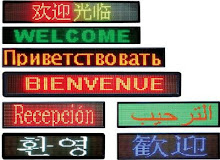
LED technology has advanced at a remarkable pace in recent years. No longer confined to electronic devices such as mobile phones or watches, LED-based solutions are becoming ever more widespread. They improve the quality of people’s lives in retail outlets, hotels, restaurants, offices, domestic environments and in many different features of the urban landscape including public buildings, bridges, footpaths, market squares and façades.
It’s hardly surprising LEDs are proving so popular. Compared with traditional non-solid-state lighting, they are energy-efficient, produce fewer CO2 emissions and radiate little heat, cost less to run and maintain, are small and flexible, last longer and produce a light that is precisely controllable and programmable.
Although the colour properties of LEDs have been frequently applied by designers for atmosphere creation, entertainment and architectural highlighting, there is another area where LEDs are becoming increasingly popular; white light. For more than a decade, LEDs have been offering a viable alternative to conventional light sources, and with ongoing improvements in brightness, this is a trend definitely set to continue and broaden in scope.
































ไม่มีความคิดเห็น:
แสดงความคิดเห็น